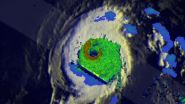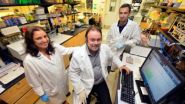(Press-News.org) Reston, Va. (August 5, 2014) – A new study diagnosing infection in patients with pancreatic fluid collections may swiftly and accurately rule out active infection in the body. As reported in the August issue of The Journal of Nuclear Medicine, this treatment may assist in bringing nuclear medicine to the forefront of clinical management.
Acute pancreatitis (AP) is a sudden inflammation of the pancreas. It can have severe complications and high mortality despite treatment. While mild cases of AP are often successfully treated with conservative measures, such as nil per os (NPO) and aggressive intravenous fluid rehydration, severe cases may require admission to the intensive care unit or even surgery to deal with complications of the disease process. Early detection of infection in AP affects the choice of treatment and clinical outcome.
"Documenting infection of pancreatic necrosis/pancreatic or peripancreatic fluid collections is one of the key questions in managing such patients. So far only fine needle aspiration under radiological guidance could establish that with limitations of invasive procedure and at times insufficient amount of aspirate," said Anish Bhattacharya, MD, lead author of the study "PET/CT using 18F-fluorodeoxyglucose-labeled autologous leucocytes in the diagnosis of infected fluid collections in acute pancreatitis." He continued, "The present study, for the first time, gives evidence of a non-invasive investigation that can answer the question of infected pancreatic fluid collections. It even distinguishes two collections, one with and the other without infection. It could also be used to follow up with such patients after a radiological or endoscopic intervention."
In the study, researchers from the Postgraduate Institute of Medical Education and Research, Chandigarh, India, studied 41 patients, 28 male and 13 female, aged 21-69 with AP and radiological evidence of fluid collection in or around the pancreas. Leucocytes were separated from the patient's venous blood, labeled with 18F-fluorodeoxyglucose (FDG) and re-injected intravenously, followed by PET/CT imaging two hours later. A final diagnosis of infection was based on microbiological culture of fluid aspirated from the collection. Patients were managed with supportive care and antibiotics; percutaneous drainage/laparotomy were performed when indicated.
Blood glucose, total leucocyte count, neutrophil count and leucocyte labeling efficiency varied from 83 to 212 (118±30) mg/100ml, 4600 to 24,200 (11648 ± 5376)/mm3, 55% to 90% (73 ± 10) and 31% to 97% (81 ± 17) respectively. Increased tracer uptake was seen in the collection in 12 out of 41 patients; 10 had culture-proven infection and underwent percutaneous drainage, while aspiration was unsuccessful in two. The scan was negative for infection in 29 patients (25 out of 29 fluid cultures negative for infection and aspiration unsuccessful in four). Sensitivity, specificity and accuracy of the scan were 100% in 35 patients in whom fluid culture reports were available.
"This research uses a new technique to diagnose infection occurring in patients with pancreatic fluid collections. The patient is spared empirical antibiotic therapy or radiological intervention followed by time-consuming microbiological work-up," noted Bhattacharya.
The search for the ideal infection imaging radiopharmaceutical agent/technique has continued for several decades now, noted Bhattacharya. "This study suggests that PET-CT using FDG-labeled leucocytes may be useful in swiftly and accurately detecting or ruling out active infection in any part of the body, bringing nuclear medicine to the forefront of clinical management in these situations. This would encourage researchers to identify more such techniques in future," he said.
INFORMATION:
Authors of the article "PET/CT using 18F-fluorodeoxyglucose labeled autologous leucocytes in the diagnosis of infected fluid collections in acute pancreatitis" include Anish Bhattacharya, Sarika Sharma, and Bhagwant Rai Mittal, Department of Nuclear Medicine; Rakesh Kochhar, Department of Gastroenterology; Pallab Ray, Department of Medical Microbiology; and Naveen Kalra and Niranjan Khandelwal, Department of Radiodiagnosis, Postgraduate Institute of Medical Education and Research, Chandigarh, India.
Please visit the SNMMI Media Center to view the PDF of the study, including images, and more information about molecular imaging and personalized medicine. To schedule an interview with the researchers, please contact Kimberly Brown at (703) 652-6773 or kbrown@snmmi.org. Current and past issues of The Journal of Nuclear Medicine can be found online at http://jnm.snmjournals.org.
About the Society of Nuclear Medicine and Molecular Imaging
The Society of Nuclear Medicine and Molecular Imaging (SNMMI) is an international scientific and medical organization dedicated to raising public awareness about nuclear medicine and molecular imaging, a vital element of today's medical practice that adds an additional dimension to diagnosis, changing the way common and devastating diseases are understood and treated and helping provide patients with the best health care possible.
SNMMI's more than 18,000 members set the standard for molecular imaging and nuclear medicine practice by creating guidelines, sharing information through journals and meetings and leading advocacy on key issues that affect molecular imaging and therapy research and practice. For more information, visit http://www.snmmi.org.
PET/CT using FDG-labeled leucocytes may detect infection in acute pancreatitis patients
2014-08-05
ELSE PRESS RELEASES FROM THIS DATE:
Kaiser Permanente study finds shingles vaccine remains effective after chemotherapy
2014-08-05
PASADENA, Calif., August 5, 2014 — The herpes zoster vaccine continues to be effective in protecting older adults against shingles, even after they undergo chemotherapy, according to a Kaiser Permanente study published today in the journal Clinical Infectious Diseases.
Researchers examined the electronic health records of more than 21,000 Kaiser Permanente patients in Southern California who were 60 years of age and older and received chemotherapy between January 2007 and December 2012.
Researchers found that those patients who were previously vaccinated with zoster ...
Electronic cigarettes: many questions, limited research
2014-08-05
August 5, 2014 – Electronic cigarettes (ECIGs) are booming in popularity—but there's still only limited evidence on their potential health risks, or their advertised benefits in helping people to quit smoking, according to a research review in the July/August Journal of Addiction Medicine, the official journal of the American Society of Addiction Medicine. The journal is published by Lippincott Williams & Wilkins, a part of Wolters Kluwer Health.
Based on their review, Alison B. Breland, PhD, of Virginia Commonwealth University, Richmond, and colleagues, write, "[V]ery ...
Genetic testing of tumor is recommended for colorectal cancer patients
2014-08-05
Bethesda, MD (Aug. 5, 2014) — Of the 143,000 patients diagnosed with colorectal cancer annually in the U.S., up to 25 percent have a familial risk of colorectal cancer. A new guideline from the U.S. Multi-Society Task Force on Colorectal Cancer recommends genetic testing of tumors for all newly diagnosed colorectal cancer patients. The task force makes specific surveillance and management recommendations for those affected by a genetic condition called Lynch syndrome, the most common cause of inherited colorectal cancer, accounting for approximately 3 percent, or more than ...
NASA sees heavy rain in Hurricane Iselle as it heads toward Hawaii
2014-08-05
NASA's Tropical Rainfall Measuring Mission satellite known as TRMM flew directly over the eye of powerful Hurricane Iselle and found extremely heavy rainfall rates occurring there.
On August 4, 2014 at 1037 UTC (6:37 a.m. EDT) when TRMM passed over the storm, Iselle had winds of about 120 knots (about 138 mph) at that time making it a dangerous category four hurricane on the Saffir-Simpson hurricane wind scale. Rainfall from TRMM's Microwave Imager (TMI) and Precipitation Radar (PR) instruments was overlaid on an enhanced infrared image from NOAA's GOES-West satellite ...
A new 'whey' to control diabetes
2014-08-05
Blood sugar surges — after-meal glucose "spikes" — can be life threatening for the 29 million Americans with diabetes. Diabetic blood sugar spikes have been linked to cardiovascular disease, cancer, Alzheimer's disease, kidney failure, and retinal damage. Now a new Tel Aviv University study, published in Diabetologia, suggests a novel way to suppress these deadly post-meal glucose surges: the consumption of whey protein concentrate, found in the watery portion of milk separated from cheese curds, before breakfast.
According to TAU's Prof. Daniela Jakubowicz and Dr. Julio ...
Pump up the music -- especially the bass -- to make you feel powerful
2014-08-05
August 5, 2014 - It's the day of the big game – before heading out to the field, you put on your headphones and blast some music to pump you up. The music seemingly empowers you to do great things. This effect is not all in your head – according to new research, music truly does make us feel powerful. But not all songs have the same effect, researchers found, and the levels of bass are a key factor in their effectiveness.
"When watching major sports events, my coauthors and I frequently noticed athletes with their earphones on while entering the stadium and in the locker ...
Cancer fighter can help battle pneumonia
2014-08-05
AUGUSTA, Ga. – The tip of an immune molecule known for its skill at fighting cancer may also help patients survive pneumonia, scientists report.
A synthesized version of the tip of tumor necrosis factor appears to work like a doorstop to keep sodium channels open inside the air sacs of the lungs so excess fluid can be cleared, according to a study published in the American Journal of Respiratory Critical Care Medicine.
This TIP peptide is attracted to the sugar coating at the mouth of the sodium channel. Once the two connect, they move inside the small but essential ...
Planet-like object may have spent its youth as hot as a star
2014-08-05
Washington, D.C.—Astronomers have discovered an extremely cool object that could have a particularly diverse history—although it is now as cool as a planet, it may have spent much of its youth as hot as a star.
The current temperature of the object is 200 to 300 degrees Fahrenheit (100 to 150 degrees Celsius), which is intermediate between that of the Earth and of Venus. However, the object shows evidence of a possible ancient origin, implying that a large change in temperature has taken place. In the past this object would have been as hot as a star for many millions ...
What drives cybersex addiction among female internet pornography users?
2014-08-05
New Rochelle, NY, August 5, 2014 -- Women who visit Internet pornography sites are at risk of developing cybersex addiction. A comparison of the tendency toward cybersex addiction among heterosexual women who do or do not use Internet pornography and factors predictive of developing cybersex addiction are described in a study published in Cyberpsychology, Behavior, and Social Networking, a peer-reviewed journal from Mary Ann Liebert, Inc., publishers. The article is available free on the Cyberpsychology, Behavior, and Social Networking website.
In "Cybersex Addiction ...
Marital tension between mom and dad can harm each parent's bond with child, study finds
2014-08-05
Children suffer consequences, too, when mom and dad argue or have tension in their relationship, experts warn.
Dads, in particular, let the negative emotions and tension from their marriage spill over and harm the bond they have with their child, says a new study's lead author, psychologist Chrystyna D. Kouros, Southern Methodist University, Dallas.
The findings drive home the conclusion that the quality of a marriage is closely tied to each parent's bond with their child, Kouros said.
The findings are based on data provided by 203 families, where family members completed ...



